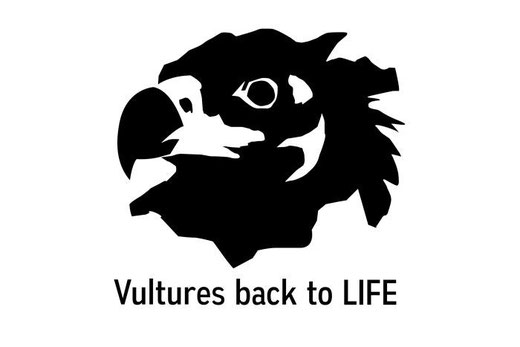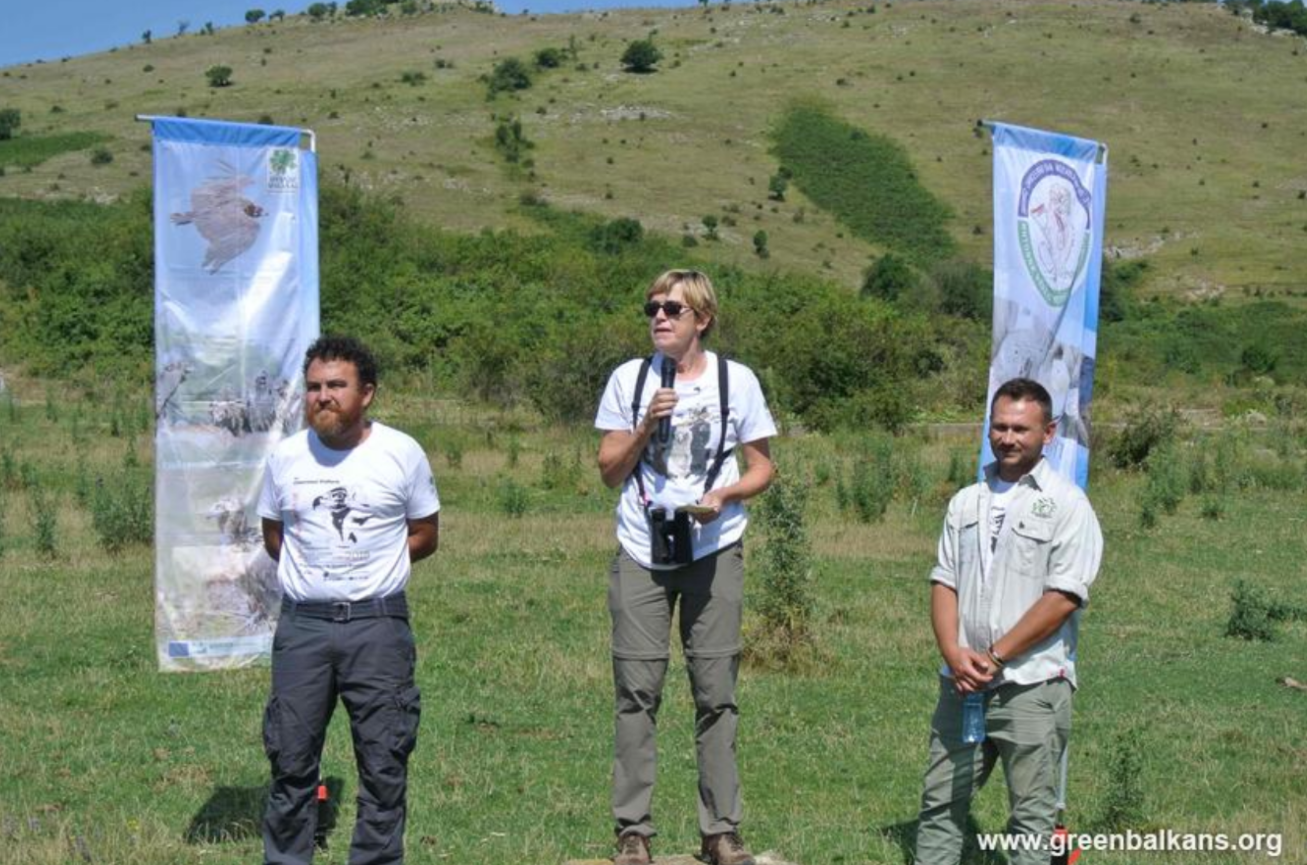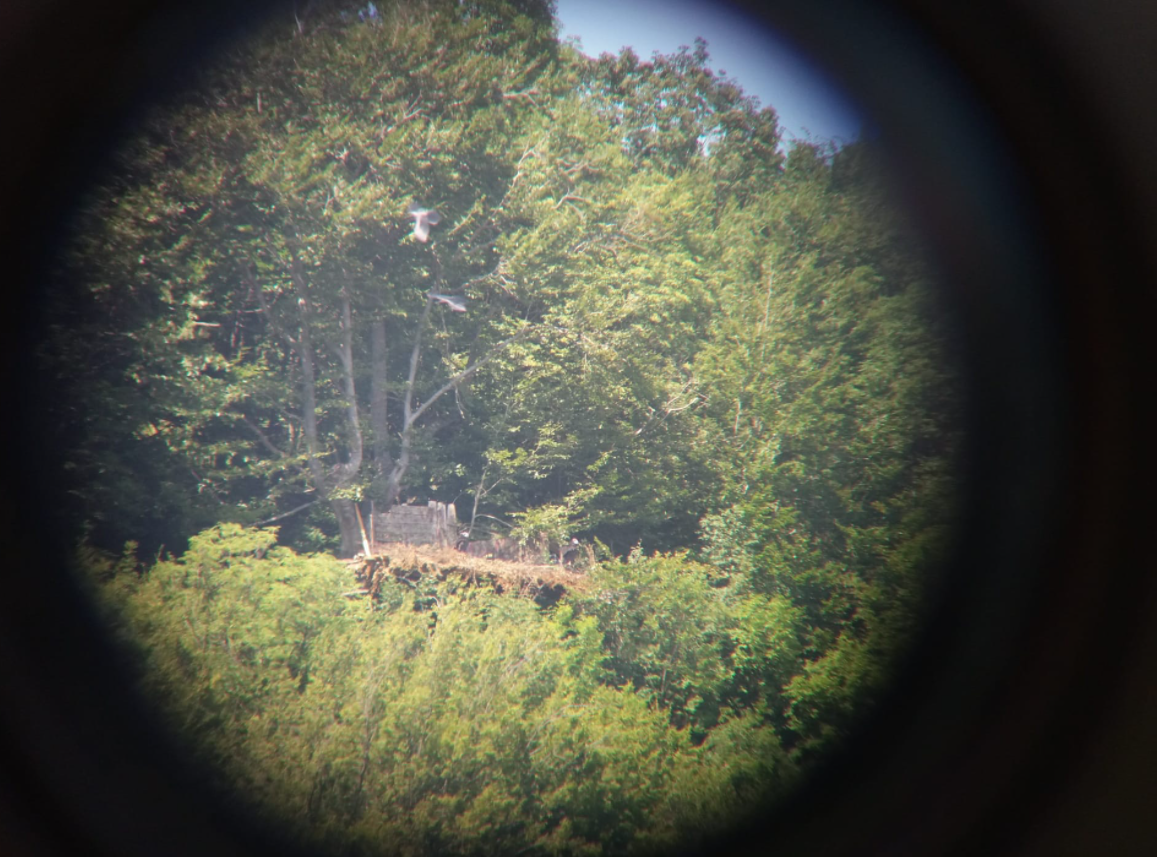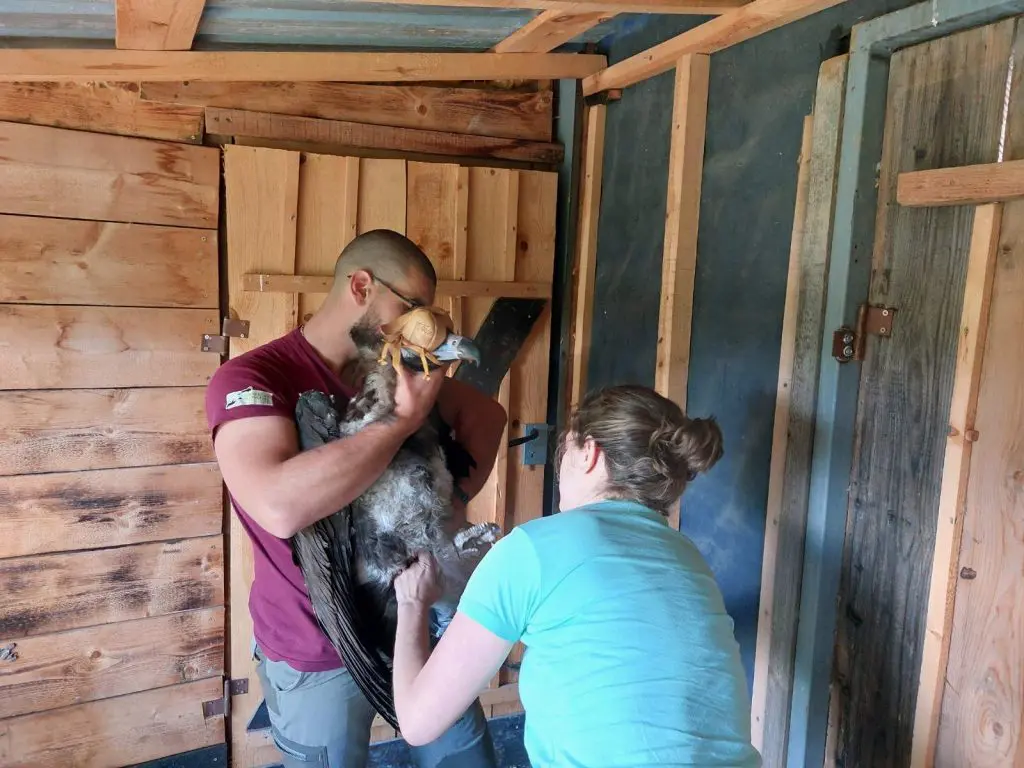
Bulgaria welcomed two more Cinereous Vultures! On the 6th of August, our Vultures Back to LIFE team released two chicks in an artificial nest (by “hacking method”) in the wild. With every release, we are closer to reintroducing the Cinereous Vulture population back to Bulgaria that became extinct during the 20th century.
Preparing for the release
Photos (c) Green Balkans and VCF
The birds are provided due to the efforts of the Eurasian Black Vulture EEP and are generously donated to Bulgaria from the Planckendael zoo in Belgium and the Parc des Oiseaux in France. Both birds are male, hatched in 2019 and around three months old – one chick is originating from France (Parc des Oiseaux) but was then transferred to Planckendael where a foster pair raised him, and the other hatched in Planckendael and was reared by its parents. Planckendael zoo transported the birds to Bulgaria, and they arrived on the 5th of August. The Vultures Back To LIFE team immediately began the preparations for their release the following day. They tagged the birds with satellite transmitters to track their movements, and equipped rings and bleached a unique combination of feathers to identify them during flight. These monitoring techniques will prove vital for the protection of the birds in the region, as they will provide insights into their behaviour, which will allow the team to implement more accurate conservation actions.
Releasing the Cinereous Vultures
Photos (c) Green Balkans and VCF
The Green Balkans organised a public event for the releases on the 6th of August. There were speeches from key contributors to the project, discussing conservation actions and the importance of this initiative. The event welcomed around 60 participants, including representatives from Sinite Kamani, Balgarka, Strandzha Nature Park Directorates, the Regional Forestry Directorate, the State Forestry services, local mayors and businesspeople. After the public event, 25 participants were excited to check out the hacking platform. Then they left and proceeded with placing the birds in the hacking platform – their new, temporary home. The so-called hacking technique that has been successfully implemented for decades was used. The technique involves placing Cinereous Vulture chicks in an artificial nest in a wild site, where the chicks are fed and monitored, without human contact, until the young birds fledge and leave the release site. After they placed the birds in the hacking platform, the monitoring efforts began shortly. The Fund for Wild Flora and Fauna team in Kotel will continue to monitor them daily and will make sure they are safe and sound in their new home. Thankfully, the birds are eating and interacting well with each. We hope the birds will adapt well in nature and fledge safely. We will let you know when they make their first flights.
Eurasian Black Vulture EEP
The EEP for the Eurasian Black Vulture is coordinated by the studbook keeper and coordinator Marleen Huyghe at Planckendael Animal Park, Mechelen/Belgium, a division of the Royal Zoological Society of Antwerp. Besides holding and updating the actual register as a studbook keeper, as a coordinator she acts as a matchmaker and makes recommendations for new pairs, transfer of individuals between zoos, husbandry, captive breeding and reintroduction candidates.
This year the Cinereous Vulture EEP bred ten chicks! Four of them are included in reintroduction project in Bulgaria and six will be kept as captive stock.
Vultures Back To LIFE

Led by the wildlife conservation charity Green Balkans, with activities also implemented by the Fund for Wild Flora and Fauna, and bringing together partners from Bulgaria, Spain, Germany, and us here at the VCF, Vultures Back to LIFE aims to reintroduce the cinereous or Eurasian black vulture to Bulgaria. The team will transfer and release around 60 birds, some from captive-breeding, but mostly coming from wildlife rehabilitation centres in Extremadura (Spain) into the wild in Bulgaria as well as creating supplementary feeding stations and improving populations of wild herbivores, improving the nesting conditions and creating artificial nest sites and tackling some of the major threats to vultures in the country such as insulating electricity pylons and illegal use of poison in the nature.

Special thanks go to the Planckendael zoo in Belgium and the Parc des Oiseaux in France for generously donating the two Cinereous Vulture chicks!
















